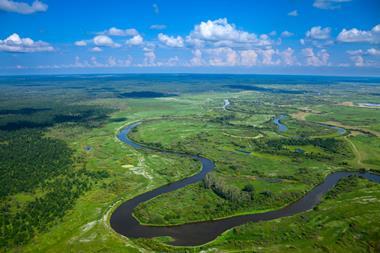The Taskforce on Nature-related Financial Disclosures (TNFD) has released the first beta version of a nature-related risk-management and disclosure framework, with three further iterations of the beta versions planned on the way to a final release planned for September 2023.
Officially launched in June 2021, the TNFD has 34 members including AP7’s Johan Florén and Snorre Gjerde of Norges Bank Investment Management, who are working with the co-chairs to develop the actual TNFD framework.
The draft framework incorporates three components: foundational guidance, including key concepts and definitions; disclosure recommendations aligned to the Task Force on Climate-related Financial Disclosures (TCFD); and ‘how to’ guidance for nature-related risk and opportunity analysis.
The alignment with the TCFD recommendations is intended to respect calls from market participants for a consistent approach and language across sustainability reporting.
The TNFD also noted that the beta framework is designed for future alignment with the global baseline for sustainability standards under development by the International Sustainability Standards Board (ISSB) “while providing flexibility for those organisations that wish to, or need to, report to different materiality thresholds and regulatory requirements”.
Location, location, location
Consideration of location is an important feature of the TNFD framework as it stands so far, according to its developers, because “dependencies and impacts on nature are inherently local”.
The beta release of the framework proposes new location-specific disclosure and provides guidance on how market participants can begin to incorporate location-based nature-related dependencies, impacts and risks into their enterprise and portfolio risk management processes.
“With climate change and nature-related impacts and risks increasing, it is essential companies incorporate natural assets into their strategic planning and risk management if they are going to succeed,” said David Craig, co-chair, TNFD.
“The approach we are taking of developing this guidance with market participants through an iterative, open innovation process over the next 18 months will help to ensure our final recommendations are both science-based and practical to implement. We invite all market participants and stakeholders to review this first prototype of the framework and share their feedback.”
Elizabeth Mrema, co-chair, TNFD, added: “My hope is that governments agree on an ambitious and effective post-2020 Global Biodiversity Framework, the negotiations of which are taking place this week in Geneva, that can then inform the metrics and targets work the Taskforce will continue to develop in the coming months.
“The process towards the Global Biodiversity Framework, and the TNFD are two key initiatives, among others, that support a shift in global financial flows away from nature-negative outcomes and toward nature-positive outcomes.”
The talks in Geneva this week are the last official session for governments to negotiate on the Global Biodiversity Framework before the UN biodiversity conference COP15 in Kunming, China, later this year. The first part of COP15 took place in Kunming and virtually in October 2021.
Read the digital edition of IPE’s latest magazine

















No comments yet